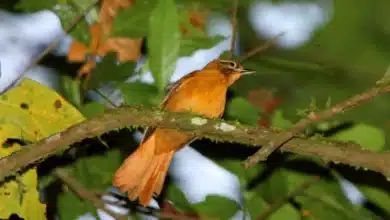Understanding Feather Cysts: Causes, Symptoms, and Treatment
Feather cysts, also known as “ingrown feathers” or “quill cysts,” are a common avian dermatological condition that affects various species of birds, including pet birds like parrots, canaries, and finches. These cysts typically develop when a growing feather fails to emerge properly from the skin, leading to the formation of a cyst around the feather follicle. While feather cysts are often harmless, they can cause discomfort and, if left untreated, may lead to complications such as infection or feather loss. In this article, we will delve into the causes, symptoms, diagnosis, and treatment options for feather cysts in birds.
Table of Contents
Toggle
Table of Contents
ToggleCauses of Feather Cysts:
Feather cysts can develop due to various factors, including:
- Genetics: Some birds may be predisposed to developing feather cysts due to genetic factors.
- Poor Nutrition: Birds with inadequate diets lacking essential nutrients may experience abnormal feather growth, increasing the risk of cyst formation.
- Trauma: Injury to the feather follicle, such as from excessive preening or aggressive grooming, can lead to the development of cysts.
- Parasites: Infestations of mites or lice can irritate the skin and disrupt normal feather growth, potentially contributing to cyst formation.
- Skin Infections: Bacterial or fungal infections of the skin can obstruct feather follicles and lead to cyst formation.
Symptoms of Feather Cysts:
The presence of feather cysts in birds may be indicated by the following signs and symptoms:
- Visible Swelling: A noticeable lump or swelling on the bird’s skin, often containing pus or fluid, indicates the presence of a cyst.
- Discomfort: Birds with feather cysts may exhibit signs of discomfort, such as increased scratching, biting, or feather picking in the affected area.
- Changes in Feather Appearance: Cysts may cause adjacent feathers to appear disheveled, broken, or misshapen.
- Localized Redness: Inflamed or irritated skin surrounding the cyst may appear red or inflamed.
- Behavioral Changes: Some birds may become lethargic or exhibit changes in behavior due to discomfort associated with feather cysts.
Diagnosis:
Diagnosing feather cysts typically involves a physical examination by a qualified avian veterinarian. During the examination, the veterinarian will inspect the bird’s skin and feathers for any signs of cysts or other dermatological abnormalities. In some cases, additional diagnostic tests such as skin scrapings or bacterial cultures may be performed to rule out underlying infections or parasites contributing to the cysts.
Treatment Options:
The treatment of feather cysts aims to alleviate discomfort, promote healing, and prevent recurrence. Depending on the severity of the cyst and underlying factors contributing to its development, treatment options may include:
- Lancing and Drainage: In cases where the cyst is large or causing significant discomfort, a veterinarian may perform a procedure to drain the cyst and remove its contents. This procedure should be performed by a professional to minimize the risk of complications.
- Antibiotic or Antifungal Therapy: If a bacterial or fungal infection is present, the veterinarian may prescribe topical or systemic medications to treat the underlying infection.
- Nutritional Supplements: Improving the bird’s diet with high-quality nutrition and supplements may help promote healthy feather growth and reduce the risk of cyst formation.
- Environmental Management: Ensuring a clean and stress-free environment for the bird can help prevent skin irritation and minimize the risk of cyst development.
- Surgical Removal: In some cases, particularly if a cyst recurs despite other treatments, surgical removal of the affected feather follicle may be necessary to prevent further cyst formation.
Prevention:
While not all cases of feather cysts can be prevented, there are steps bird owners can take to reduce the risk:
- Provide a Balanced Diet: Ensure that your bird’s diet is nutritionally balanced and includes essential vitamins, minerals, and proteins necessary for healthy feather growth.
- Regular Veterinary Check-ups: Schedule regular check-ups with an avian veterinarian to monitor your bird’s health and address any concerns promptly.
- Prevent Trauma: Minimize the risk of feather follicle trauma by avoiding rough handling and providing appropriate perches and toys for your bird.
- Maintain a Clean Environment: Regularly clean your bird’s cage and accessories to prevent the buildup of dirt, bacteria, and parasites that could contribute to skin infections.
- Monitor Feather Growth: Keep an eye on your bird’s feathers and skin for any signs of abnormalities, and seek veterinary care if you notice any concerning changes.
Conclusion:
Feather cysts are a common dermatological condition in birds that can cause discomfort and, if left untreated, lead to complications such as infection or feather loss. Prompt diagnosis and appropriate treatment by a qualified avian veterinarian are essential for managing feather cysts effectively and preventing recurrence. By understanding the causes, symptoms, and treatment options for feather cysts, bird owners can take proactive measures to promote their feathered companion’s health and well-being.



